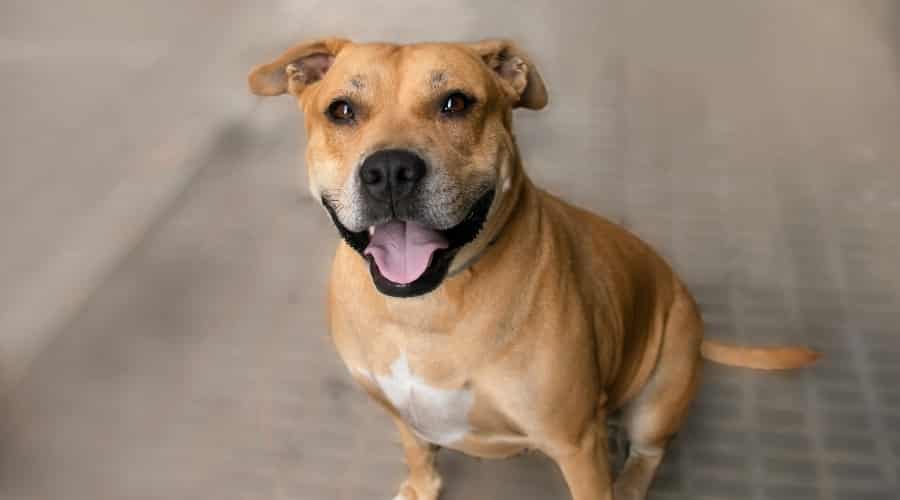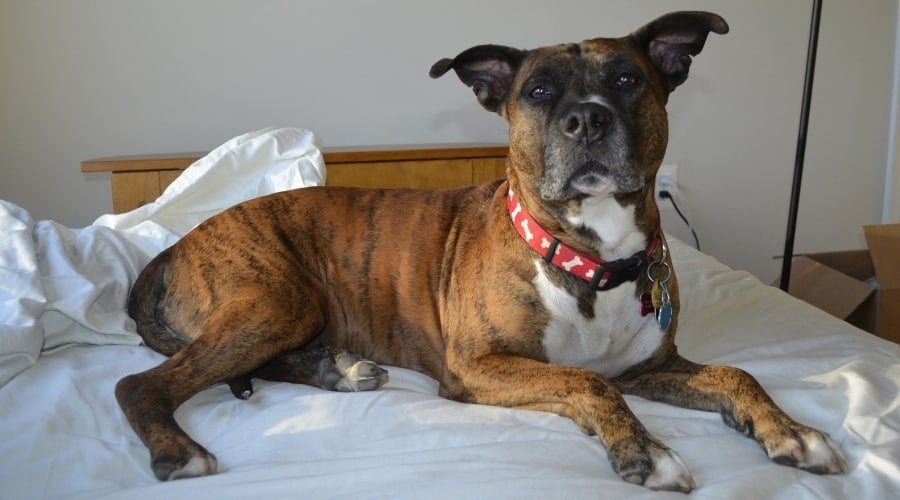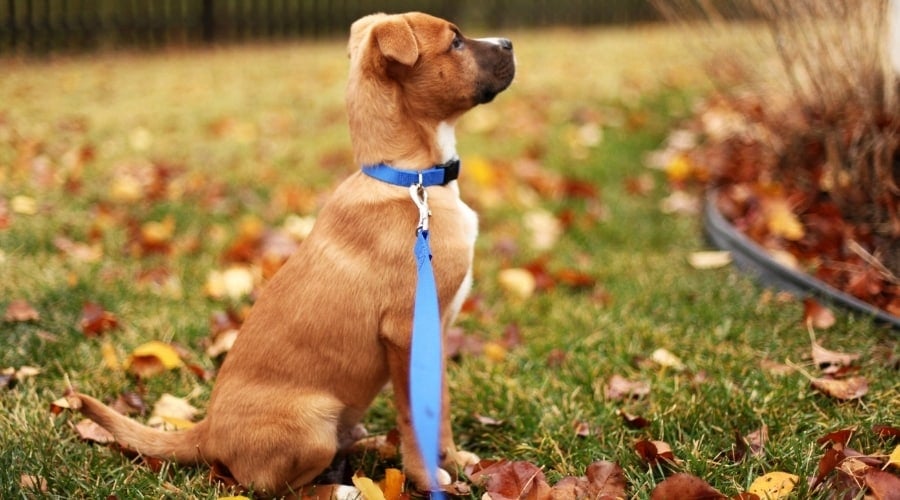Pitbull Boxer Mix: Bullboxer Breed Information, Puppy Costs & More
When you purchase through links on our site, we may earn a commission. Here’s how it works.
Mixed-breed dogs can often make some of the best family companions. While many people are drawn toward purebred dogs, don’t forget that there are lots of wonderful mutts in rescue centers all over the country. These pups are just as deserving of a loving forever home. Not least, the often zany and very loving Boxer Pitbull mix.
Table of Contents
Pitbull Boxer mixes can have varying personalities and traits, depending on the heritage that they were bred from. In most circumstances, though, you’ll get the American Pitbull Terrier’s loyalty with the boxer’s friendliness.
Before opting for a mix like this, it can be useful to understand a bit more about the possible traits that this dog could have. Different Pitbull mixes have different traits, and this mixed breed pup is no different.
Parent Breeds
Getting to know a bit about both parent breeds is the first step to understanding your Pitbull Boxer mix.
Pitbull Terrier

The American Pit Bull Terrier (also called the American Pitbull Terrier) is thought to originally have been the same as the Staffordshire Bull Terrier. They were both originally developed in nineteenth-century England and used first for bull baiting and then for illegal dog fighting.
During the 1930s, some breeders began focussing on developing the strengths of the breed as a companion animal rather than one for fighting. At this point, the Staffordshire Bull Terrier became an officially recognized breed, but the APBT did not. In 1972, the American Staffordshire Terrier was introduced as an official breed by the AKC, and this was an even more honed version of the breed.
The American Pit Bull Terrier is still not officially recognized by the AKC. It is recognized as a breed in its own right by the United Kennel Club (UKC) and the Continental Kennel Club (CKC).
The term ‘Pitbull’ has developed in recent years. It is not actually one specific breed, but rather it is a catch-all term for several different ‘bully’ breeds. It is most commonly associated with the American Pit Bull Terrier. Some other breeds are also sometimes referred to as “Pitbulls.” These include the Staffordshire Bull Terrier, the American Staffordshire Terrier, and the American Bulldog.
The term has now become associated with negative connotations. This is primarily a result of irresponsible breeders and owners and sensationalism in the media. The introduction of Breed Specific Legislation has only served to heighten the hysteria and perpetuate unfair myths. Breed Specific Legislation varies across many countries and specific states. laws range from outright bans to restrictions on owning Bully and Pitbull type breeds.
Boxer

The Boxer is thought to have originated in Germany, primarily kept as a fighting dog. Gradually, they became popular for their guarding and hunting skills. Boxers were the first dogs to be used as police dogs in Germany.
The AKC officially recognized them in 1904, but their popularity did not grow until during the 1930s. Recently, they have consistently ranked as one of the most popular breeds in the United States. Because of this popularity, they are often mixed with other breeds.
BullBoxer
Now that we’ve met the parent breeds let’s get to know this mixed-breed offspring. A Boxer Pit mix is one very special dog but can require some extra attention.
Temperament

While both the Boxer and the American Pit Bull Terrier were originally bred for their guarding and fighting traits, the Boxer has had more focus in recent years on developing a dog more suited to being a companion.
The biggest difference in their personalities is probably the fact that Boxers are not known for commonly being aggressive toward other dogs. They can be a little over-enthusiastic, rambunctious, zany, and even a little hyperactive, but they are generally fun-loving and exceptionally affectionate with people and other dogs.
Bullboxers & Children
The American Pit Bull Terrier is known for being incredibly steadfast and loyal to its family. They are sometimes even referred to as ‘nanny dogs’ because of their affection and tolerance levels with children. While they are usually dogs that love interactions with people, because of their strength and size, they should always be supervised around children.
It is also important to teach children the right way to interact with dogs. Even the most tolerant of dogs can be pushed beyond their patience levels if a child does not respect their space and boundaries.
The APBT can live well alongside other dogs and animals with the right training and socialization. However, they are a breed that is known for sometimes not liking other dogs. They can also be reactive and aggressive. If you have a Boxer APBT mix, it could mean they may do better living in a one-dog family household.
If your dog inherits more of the excitable Boxer nature, then care will need to be taken around young children so that they are not accidentally too rough.
These pups will need early socialization and obedience training. They may also need periodic reinforcement, especially in homes with children.
They are both dogs that thrive on lots of human attention. This means that most Boxer Pitbull mixes will benefit from living in a home where they have company for much of the day. APBTs, in particular, can suffer from separation anxiety if left on their own too much.
Size & Appearance

Both the Boxer and the APBT are muscular and athletic dogs. The Boxer is slightly heavier, but it tends to be taller and slimmer. The APBT is stockier with a broader chest and head. Both breeds have short, smooth coats.
This mixed breed is a medium-sized dog. A male can weigh 60 to 80 pounds and stand 17 to 20 inches. On the other hand, a female can weigh 50 – 70 pounds and stand 16 to 19 inches from paw to shoulder.
Unlike some hybrid dogs, Boxer Pit Bull Mixes will not look too radically different across the individual dogs because of the similarities in size and shape of the two breeds.
Coat & Colors

The Boxer is usually a fawn or brindle coloring, but often they have black or white markings. Boxers are also sometimes completely white, although this color is not recognized as a breed standard by the AKC. American Pit Bull Terriers come in a much wider variety of colors, so this means there is a greater chance of there being a bigger selection of coat colors in a Boxer Pit Bull mix.
They can come in mixed and solid coat colors, including black, white, fawn, brown, tan, and brindle. They also come in red and blue colors, and these varieties are often referred to as Blue Nose or Red Nose Pit Bulls as their nose and nails are also the same as their coat color, rather than the standard black coloring.
Exercise
Both breeds are generally high-energy dogs. Your Boxer Pit Bull Mix will not likely be a dog that will want to be a couch potato with just one short walk a day. They are dogs that will benefit from at least one or two decent daily walks or other physical activities. They may even enjoy taking part in some sort of dog sport.
Boxers are a brachycephalic, flat-faced breed, and this means that they can overheat more quickly than other dogs. If your dog inherits the face shape of the Boxer, more care will need to be taken to ensure they do not get heat exhaustion in hot weather conditions, particularly when exercising.
Walking them first thing in the morning and the evening may be required in the summer months to help keep them at a comfortable temperature.
Training

Given the strength of both breeds, training and socialization will be extremely important. If your dog has the hyperactive nature of some Boxers, they can become a bit wild and difficult to manage. They are also a dog that, in their enthusiasm can like to jump up.
If they are not good with other dogs, like some APBTs, if they are too strong and you do not have good leash control, this can make things dangerous for you, them, and other dogs.
Both dogs need as much training and socialization as possible from the start to ensure that you have a well-rounded and manageable dog. They are both clever dogs, eager to please, and respond extremely well to positive, reward-based training methods.
Both also have powerful jaws and enjoy chewing. Making sure that you offer plenty of tough, interactive chew toys and additional enrichment will help you avoid any potentially destructive behavior in the home.
Grooming

Your Boxer Pit Bull Mix is unlikely to have a high-maintenance grooming regimen. Both breeds have a smooth, short coat, so no expensive trip to the groomers will be required for clipping.
They do both shed, though, so a good curry comb style used once a week will be beneficial to lift out dead hairs, keep the coat and skin in good condition, and minimize the number of hairs found around the house. A vacuum cleaner that lifts pet hair easily and a lint roller for your clothes will likely still be a good investment too.
Health

If you get your Boxer Pit Bull Mix from a rescue shelter, you will not know the history of the parents. We would always recommend considering pet insurance to avoid any potentially costly medical bills.
If you have bought your dog as a puppy, it is important to make sure you have purchased them from a responsible breeder that has health checked the parents so they are not knowingly breeding from dogs that have conditions that can be passed on.
The Boxer, in particular, has a fair few inheritable conditions that you should be aware of. Boxers are a breed commonly associated with different types of cancers, including skin cancers, lymphoma, and mast cell tumors.
They are also known for developing heart conditions, including Dilated Cardiomyopathy (DCM) and Aortic Stenosis. Both these conditions can be managed if they are diagnosed early enough, but they cannot be cured, and they often result in a shortened life span of the dog.
Boxers also have a predisposition towards joint problems, like hip dysplasia, and this can lead to early-onset arthritis.
American Pit Bull Terriers are generally seen as having less inheritable conditions than Boxers, but they are still more prone to several conditions.
They are also prone to hip dysplasia, they can more commonly develop skin conditions and allergies, and they are linked to developing hypothyroidism (an underactive thyroid that causes their metabolism to slow down). Luckily, skin conditions and hypothyroidism can usually be successfully managed with medication or changes in diet or lifestyle.
Nutrition
You are likely to have a high-energy, muscular, and reasonably-sized dog. While most dry foods you’d feed a boxer will work, you’ll want to budget for a high-quality diet for your mix depending on its energy levels. If your dog does have allergies (like some APBTs), you may need to feed a specific diet on the advice of your vet or a qualified canine nutritionist.
Sometimes an exclusion diet needs to be done for a while to establish if the allergy is food-related and what food may be causing the reaction. Once this has been discovered, choosing food that only contains ingredients that do not set the condition off may be required.
Breeders & Puppy Costs

Sadly, because of the unfair stigma attached to Pitbull-type dogs, many of these dogs, and mixes of them, can languish in shelters for longer than some other breeds. This means there is a good chance you could find a Boxer Pitbull mix deserving of a loving home at your local rescue. A Boxer Pitbull mix puppy will cost you anywhere from $500 to $1,000.
A responsible breeder will have done appropriate health checks on the parents. They will allow you to visit mom and her litter together in a loving home environment and will be doing appropriate early socialization and handling. A good breeder will not separate mum and puppies until they are fully weaned and at least eight weeks old.
As Family Pets
A Boxer Pit Bull mix can make a wonderful family pet.
- Both breeds are usually extraordinarily affectionate and loving with people.
- Bulboxers are likely to be high-energy dogs that require a lot of exercise and enrichment.
- They would benefit from an active home that has company around for them most of the day.
- If they inherit more of the APBT traits, they might not necessarily enjoy the company of other dogs. They may fare better being the only dog in the household.
- Bullboxers are likely to be powerful dogs. Making sure you spend time training to stop any unruly or unmanageable behavior will also be important.
- These pups can grow very attached and may not do well if left alone for long periods of time.
- They may be prone to allergies and a sensitive stomach.
- They can do well with children with proper training.
- Bullboxers have a short coat and are a fairly low-maintenance breed for grooming.
Keeping Your Pup Active
When adopting a high-energy breed like this, it is vital to keep them active. Not enough physical activity can affect their physical and mental health and cause bad behavior. Be sure you have plenty of time to spend with them. Regular training sessions, brain games, and field trips to new places can help keep your pup active and entertained. These pups are also very affectionate and need reassurance that you love them. Regular playtime keeps them happy, active, and healthy.



